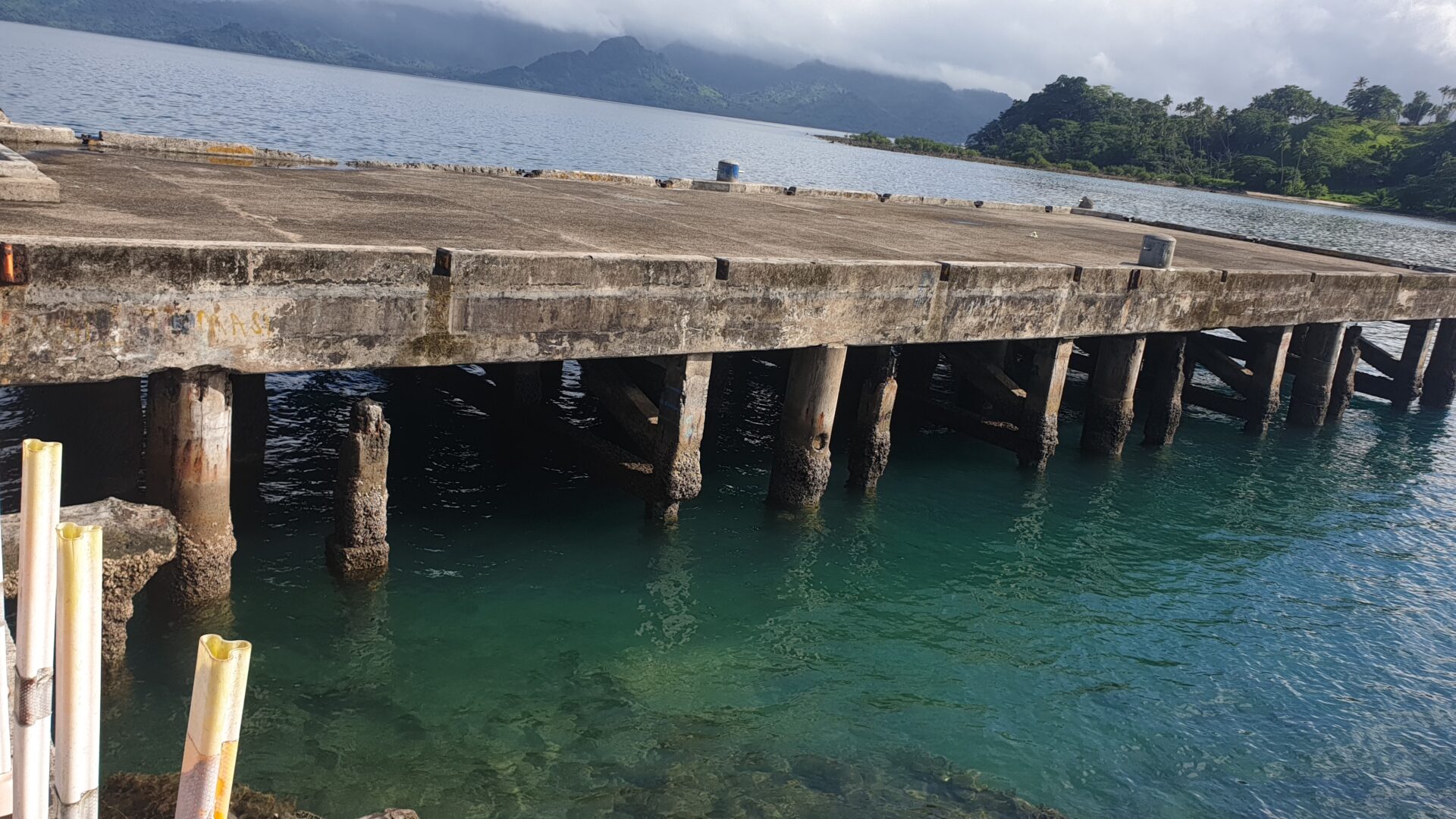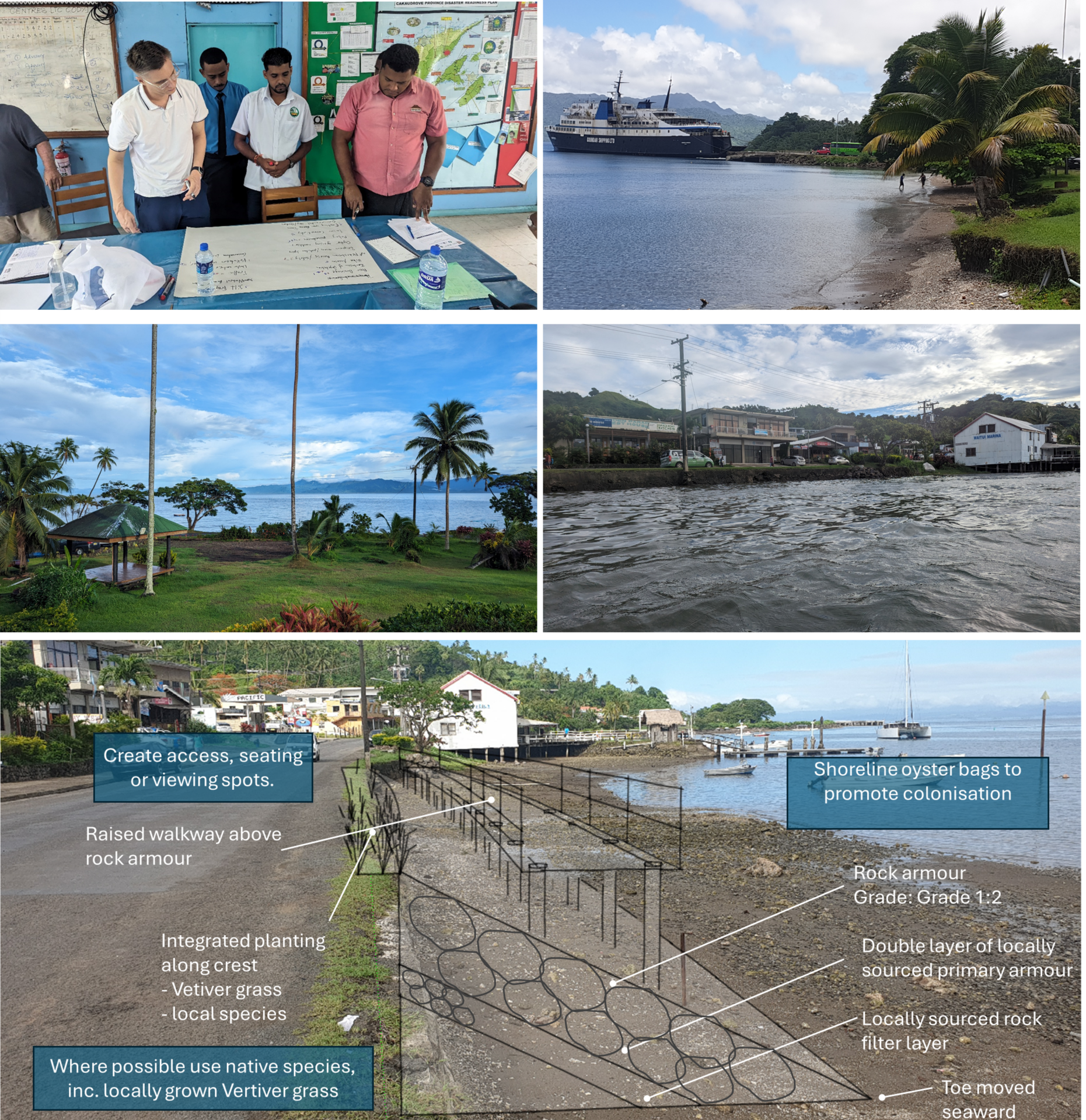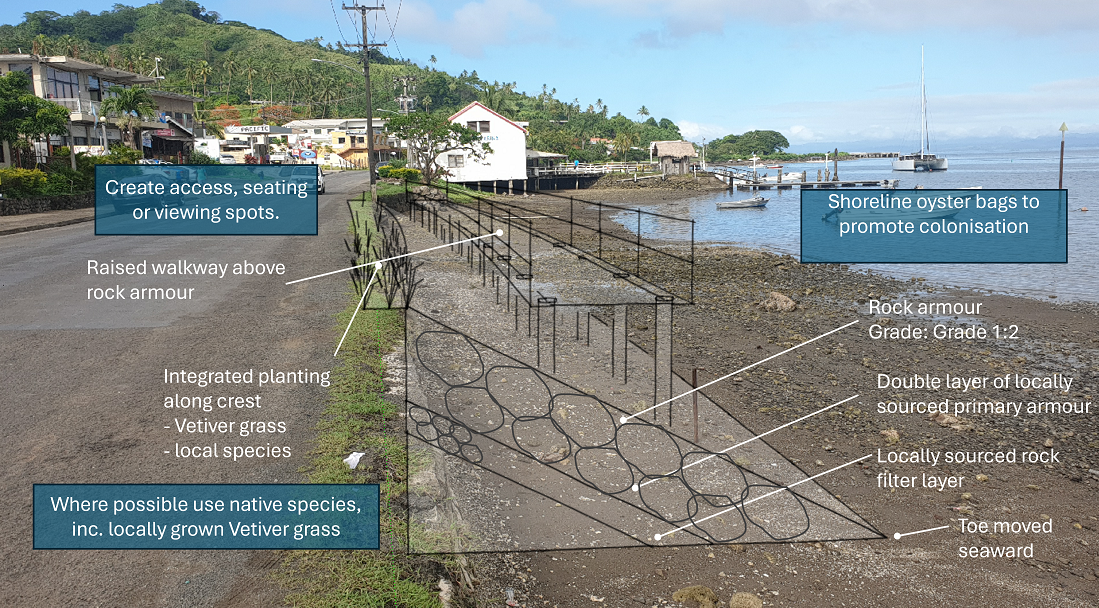The challenge
Natural disasters pose an increasingly serious threat to the Pacific, exacerbated by the threat of sea level rise. While there is evidence of efforts to improve resilience against disasters, adaptation measures are not evenly distributed. Due to higher populations and the increased intensity of storm events, the impacts have continued to rise over the last decade. Therefore, more needs to be done to ensure the region’s resilience can outpace climate-induced disasters. Savusavu, located on Fiji’s northern island of Vanua Levu, has a population of around 5,000 people. The town is a hotspot for regional businesses, markets, and agriculture. It is also a burgeoning tourism spot, currently receiving 2% of Fiji’s total tourism, with new marinas and services under construction. As a coastal community, it is exposed to extreme weather, natural disasters, and climate change impacts. We worked with Eco Pasifika to complete this project for GIZ GmbH, conducting a feasibility assessment for new coastal protection, with an emphasis on Nature-Based Solutions

Our work
This project was funded through the GiZ Gap Fund and required analysis of coastal hazards and the feasibility of a range of coastal protection interventions. Notably, this work included drafting early technical designs for both Nature-Based Solutions (NBS) and traditional coastal protection approaches. Combining data from our hazard assessment, with economic data (including direct and indirect costs, as well as ecosystem services) we completed a 30-year cost-benefit analysis for a range of coastal protection options across 16 sites along the Savusavu frontage.
Previous World Bank projects have identified opportunities to incorporate ecosystem resilience within coastal protection throughout Fiji. Our feasibility study allowed a site-specific assessment,
financial analysis, costing (including maintenance and operation costs) and an engineering review of its likely effectiveness. This work is now available to support the next stage in coastal protection financing

